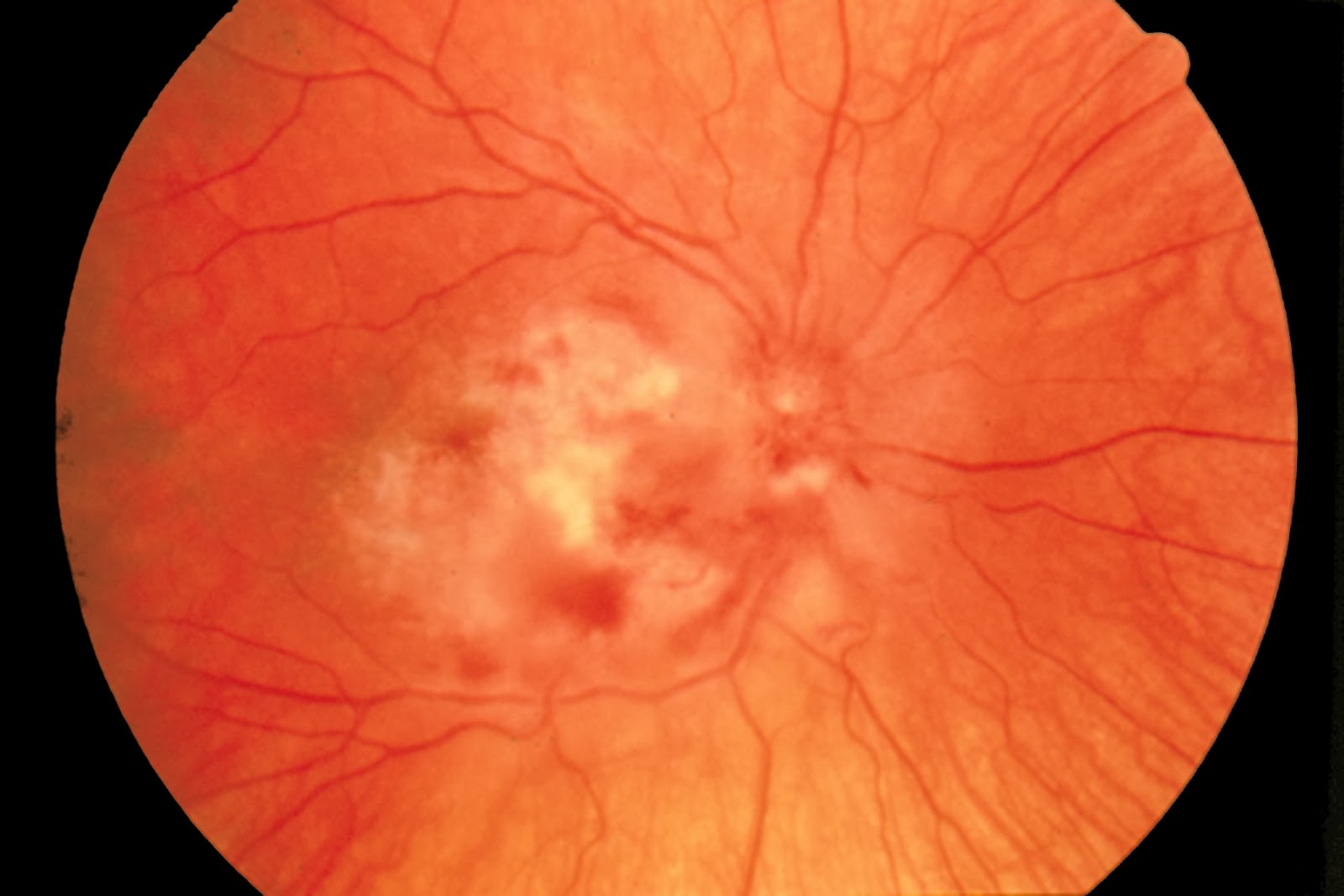 |
| Fig 2: CMV retinitis. |
Cytomegalovirus (CMV) Infection
Cytomegalovirus (CMV) infection is an important consideration in any organ transplant recipient, particularly where the recipient has never had infection but the donor is a carrier, since the recipient is then at risk of primary infection. For this reason close attention is given to prophylaxis, particularly in the first 3 months after transplantation. When prophylaxis is stopped there is still a chance of infection, which in the case of liver transplant recipients will often present as fever, abdominal pain, diarrhoea (colitis), breathlessness (pneumonitis) and hepatitis. Other features of the illness can include haematological abnormalities, retinitis and oesophagi tis.
Diagnosis is by quantifying CMV viraemia in the blood. Treatment is with intravenous ganciclovir and reduction of immunosuppression if possible.
Subscribe to:
Post Comments (Atom)

No comments:
Post a Comment